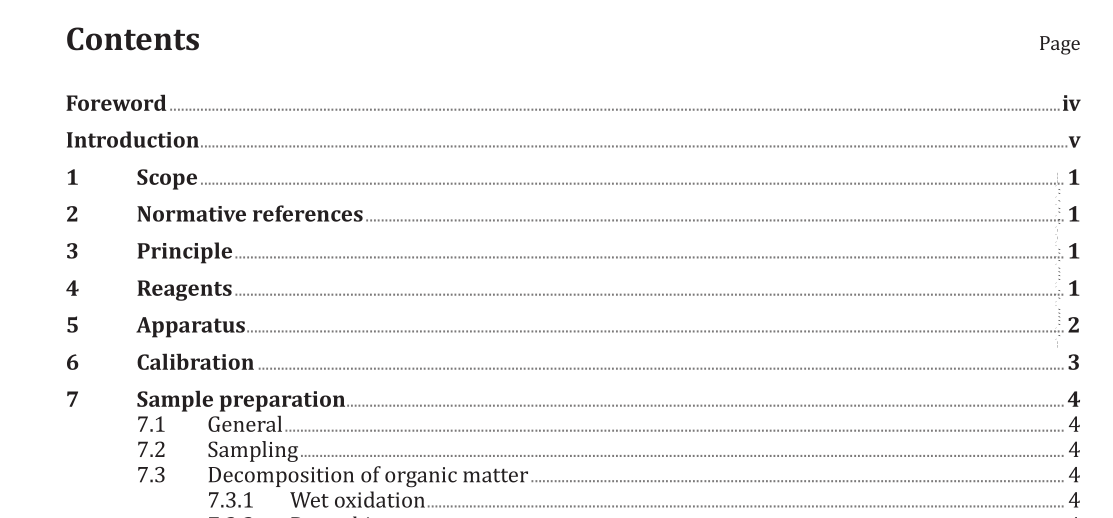ISO 19050:2015 pdf download.Rubber, raw, vulcanised — Determination of metal content by ICP-OES
1 Scope
This International Standard describes the method of determination of both major and trace levels of metal contents in rubber — raw, vulcanized — by ICP-OES.
2 Normative references
The following documents, in whole or in part, are normatively referenced in this document and are indispensable for its application. For dated references, only the edition cited applies. For undated references, the latest edition of the referenced document (including any amendments) applies.
ISO 123, Rubber latex — Sampling
ISO 124, Latex, rubber — Determination of total solids content
ISO 1795, Rubber, raw natural and raw synthetic — Sampling and further preparative procedures
ISO 18899:2013, Rubber — Guide to the calibration of test equipment
3 Principle
An aqueous sample is converted to an aerosol via a nebulizer. The aerosol is transported to the inductively coupled plasma which has a high temperature zone (8 000 °C to 10 000 °C). The analytes are heated (excited) to different (atomic and/or ionic) states and produce characteristic optical emissions. These emissions are separated based on their respective wavelengths and their intensities are measured (spectrometry). The intensities are proportional to the concentrations of analytes in the aqueous sample. The quantification is carried out via an external multipoint linear standardization obtained by comparing the emission intensity of an unknown sample with that of a standard sample. A process flow of atomization of sample in ICP-OES is shown in Annex B.
4 Reagents
Use only reagents of recognized analytical grade, unless otherwise specified, and distilled or deionized water or water of equivalent purity.
4.1 Ultra-pure grade of concentrated nitric acid, density 1,42 g/ml.
4.2 Ultra-pure grade of concentrated hydrochloric acid, density 1,19 g/ml.
5 Apparatus
Usual laboratory apparatus and glassware and, in particular, the following.
5.1 ICP-OES system. A portion of the photons emitted by the ICP is collected with a lens or a concave mirror. This focusing optic forms an image of the ICP on the entrance aperture of a wavelength selection device such as a monochromator. The particular wavelength exiting the monochromator is converted to an electrical signal by a photodetector. The signal is amplified and processed by the detector electronics,then displayed and stored by a personal computer. Different components of the instruments are shown in Figure 1. A description of the different components is given in 5.1.1 to 5.1.4.
5.1.1 Test solution introduction, to produce a steady aerosol of very fine droplets. There are three basic parts to the sample introduction system as listed in 5.1.1.1 to 5.1.1.3.
5.1.1.1 Peristaltic pump, to draw up the test solution and deliver it to the nebulizer.
5.1.1.2 Nebulizer, to convert the solution to an aerosol that is sent to the spray chamber.
5.1.1.3 Spray chamber, to filter out the large, uneven droplets from the aerosol.
5.1.2 Energy source, to get atoms sufficiently energized such that they emit light. There are three basic parts to the energy source as listed in 5.1.2.1 to 5.1.2.3.
5.1.2.1 Radio frequency generator, to generate an oscillating electro-magnetic field at a frequency of
27,12 MHz. This radiation is directed to the load coil. Equipment are also available with electro-magnetic field at a frequency of 40,68 MHz.
ISO 19050:2015 pdf download
